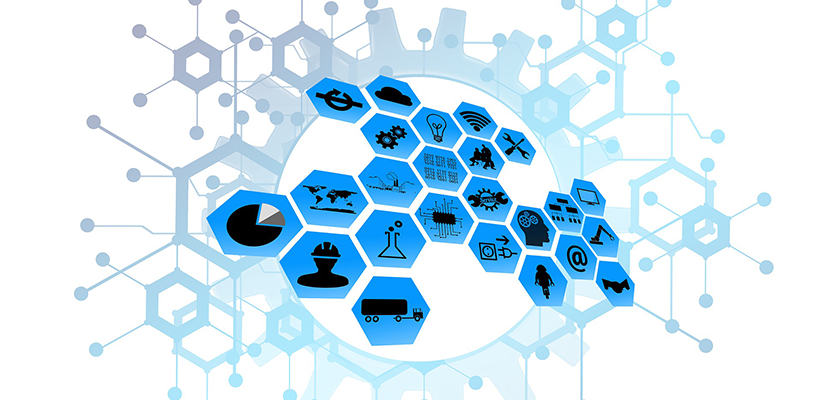
An organization’s data consists of an extensive network of spreadsheets, databases, graphs, and charts. However, such resources are just the connecting dots in a vast data ecosystem. Before we look at how modern data ecosystems can drive business value, let’s review the traditional data ecosystem.
Listen to “How does a Modern Data Ecosystem Drive Business Value?” on Spreaker.
The Early Steps
A traditional data ecosystem collects, stores, processes, and analyzes data. In such an ecosystem, data is usually collected from a variety of sources and databases and then stored in a data warehouse or another type of centralized repository. However, moving data through such an ecosystem via extract, transform, and load (ETL) processes, or otherwise replicating the data into a data warehouse, is time-consuming, and often complex. In addition one or more data mart often need to be built to facilitate report generation. Overall, traditional data ecosystems were designed to provide organizations with a way to manage and make sense of their data, to support decision-making and drive business outcomes. Though they have their shortcomings, they established a solid foundation for today’s modern data ecosystems.
An Eternal Modern Data Ecosystem
The modern data ecosystem is an improved version of the traditional data ecosystem, with a focus on more advanced technologies and approaches. Modern data ecosystems are designed to be more flexible, scalable, and faster than traditional data ecosystems, and they often make use of cloud computing, big data technologies, and machine learning.
There have been many attempts in the traditional data ecosystem to try to consolidate the data, beginning with the data warehouse, then in a big data store, and now in the cloud. However, a modern data ecosystem mindset begins with the acceptance that data is always going to be distributed. This might be because businesses might not want to have all of their data on a single cloud instance; they might need to store some data on-premises and some on one or more cloud instances. It might also be because businesses recognize that best-of-breed technologies can be leveraged from different vendors for different types of workloads.
What becomes more important in a modern data ecosystem is the recognition that there are powerful ways to discover and access information. A modern data ecosystem consists of distributed, heterogeneous physical layers, but it is supplemented by an intelligent logical layer. This logical layer makes the underlying existing traditional data ecosystem eternally modern because it’s infinitely flexible. With this logical layer, modern data ecosystems are more agile and responsive than traditional data ecosystems, and they can support more advanced data analytics and machine learning capabilities. It can also support more heterogeneous data sources, such as those that are cloud-based and those that reside on-premises, and they provide a unified method of accessing and leveraging distributed data, which helps organizations with real-time decision-making and gaining insights.
Emerging Technologies Are Shaping the Modern Data Ecosystem
A variety of emerging technologies, such as cloud computing, big data, machine learning, data governance, and data visualization, are helping organizations to better manage and make sense of their data, to drive more informed, data-driven decision-making. So, these technologies must be interconnected so that users can understand the data regardless of its format or location.
These emerging technologies are constantly modified in a modern data ecosystem, yet at the same time they are enriching the modern data ecosystem by having multiple endpoints, both as a source and as a consumption layer. The key here is the ability to adapt to this, and today, there are a few key architectures within a modern data ecosystem that help. For example, a logical data fabric architecture unites the physical and the semantic layers to present the data. Similarly, data mesh is an architectural idea or an architectural pattern that maps out a balance between distribution and centralization. There are many different sub patterns, but the unifying concept between all of these different architectures is the minimization of replication and the prominence of a logical layer, or a logical aspect to the data infrastructure.
One of the key technologies is data virtualization, which underlies and supports all of these different architectures. Data virtualization uses a logical approach to data integration, by enabling real-time access to disparate data without replication.
A Modern Data Ecosystem that Drives Business Value
At the end of the day, it’s all about business value and how we can help organizations do what they do best. Simply ingesting, acquiring, storing, and processing data doesn’t drive business value.
What really drives business value is when data is consumed by many users, in a relevant context for providing useful outcomes for their queries. Consumption should be the focus, and that’s what the modern data ecosystem focuses on. So the key to driving better consumption of more relevant data is being able to discover the data, having the freedom to discover data through a self-service logical data catalog, and then being able to access it in real time. Organizations also need to establish the right security and permissions, the ability to see the relevance of the data, and the ability to access the data in the form that users require.
Data virtualization brings these capabilities to the modern data ecosystem. With these capabilities, the modern data ecosystem drives business value by supporting an organization’s data-driven decision-making processes with timely insight and informed outcomes.
For more insights on this topic, check out our conversation with Suresh Chandrasekaran, Executive Vice President at Denodo for information on All Things Data!
- Embracing Data Mesh: A Modern Approach to Data Management - September 21, 2023
- Monolithic vs. Logical Architecture: Which for the Win? - February 16, 2023
- Modern Data Ecosystems that Drive Business Value - January 6, 2023
